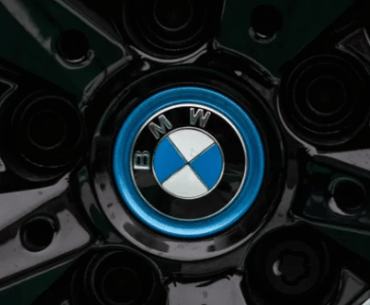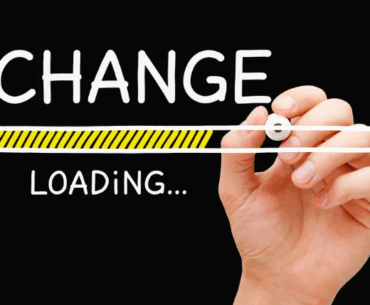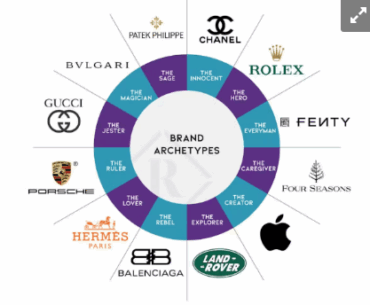Sourced from AOL
Many e-commerce businesses adopt complex loyalty programs to keep customers around, but these strategies don’t always perform as well in today’s market. Instead, making authentic connections is now the best way to create true customer loyalty.
E-commerce businesses must shift their focus from driving transactions to fostering relationships based on positive interactions. This new approach should stretch across your entire organization—from operations and fulfilment to delivery and post-purchase communications. Establish and maintain meaningful relationships with customers, and their loyalty will follow.
ShipStation highlights five powerful ways to build loyalty and turn one-time buyers into long-time customers.
1. Start with product excellence, not programs
The first and most essential aspect of customer retention is the quality of your product or service. No amount of advertising can convince a first-time customer to keep buying if your product doesn’t deliver on its promise.
“The best way to develop loyalty is by delivering a remarkable product in a remarkable way to the right audience. If that’s done, you’ll see customers come back on a regular basis,” said Eric Bandholz, the founder of Beardbrand during ShipStation’s recent Innovation Delivered summit.
The decline of loyalty apps and points systems
Many businesses still launch loyalty programs that reward customers for coming back. However, these aren’t a one-size-fits-all solution. Email marketing, automation, and other more recent marketing strategies have taken over much of the marketing space. As time goes by, customers lose interest in loyalty programs. The systems become less impactful or cost-effective, potentially hurting your organization more than helping it.
Effective loyalty apps and points systems should support your operational foundation. This way, your organization can deliver rewards and savings to customers without disrupting operations, inventory, or revenue.
For example, some online rewards programs offer customers free items with their next order. This encourages customers to make additional purchases, saving you the cost of packaging and shipping the extra items separately.
A new focus on automation
Automation has revolutionized online shopping, letting you retain customers with seamless repurchases rather than extra incentives. Now, shoppers can essentially subscribe to specific products—from pet supplies to home essentials—often at lower prices.
Beyond simplifying customer experiences, automation can also streamline your organization’s operations. For instance, based on how many automated “subscribe and save” orders you have, you can easily estimate how much inventory you’ll need each month for your regular customers.
That said, most first-time customers won’t subscribe or choose an automated delivery option, at least without significant savings. So, even with today’s best retention strategies, the quality of your product is the first place to focus.
“Your next step after that is achieved is to think about, ‘How do I automate the buying process? How do I make it so seamless that people have no friction points to coming back?’” said Bandholz.
2. Treat customers like family, not numbers
Customers are real people who want genuine relationships with companies. When it comes to retention, you shouldn’t just look at transactions as order numbers and revenue. Instead, consider the customer’s needs, motivations, and expectations, so you can meet them on their level.
“Make it about the client. All we’re trying to do is keep promises to people and make bigger promises to more people,” said Robert Metcalf, COO and co-founder of May Lindstrom Skin. “If you always stay focused on that, loyalty takes care of itself because you’re loyal to the customer, and they don’t need to protect themselves from you because it’s your job to serve them.”
Fostering strong relationships and trust with clients can motivate them to not only return, but to refer friends, family, and colleagues. One satisfied customer quickly becomes many. This trust should extend through all of your operations, not just your friendly customer service team.
Consider what you would expect if you were one of your customers. How would you feel if a delivery was late compared to how you’d feel if the package arrived early? What would you expect when purchasing your product? What obstacles could discourage you from completing your purchase?
How to foster genuine relationships over transactional exchanges
Trust isn’t developed overnight. It takes several transactions to nurture the connection and inspire customer confidence every time they consider buying from you again. Ultimately, you want customers to feel reassured when they see your company logo, making that “purchase” button even more enticing.
Establishing trust with customers doesn’t mean your organization needs to have a perfect record. That’s unrealistic. Shipping delays, manufacturer shortages, and other setbacks may be out of your control and can all impact your customers’ experiences, but they don’t have to define the customer’s final impression.
Setbacks offer excellent opportunities to increase trust. It all depends on how you respond. If a customer’s delivery is delayed, for example, you can strengthen the relationship and earn trust by notifying them as soon as the delivery runs behind schedule. Or, take it one step further and refund their shipping costs.
Similarly, if an item is out of stock, you can respond by proactively offering the customer multiple options, like alternate colour choices or a backorder at a discounted price.
Turn a negative transactional experience into a way to impress your customer with great service that maintains—or even bolsters—their loyalty.
3. Authentic brand storytelling that builds brand affinity and customer loyalty
Consistent brand storytelling lets you reach customers on a more meaningful level. When customers have emotional or personal ties with your brand, they’re more likely to trust you and share your story with others.
The right stories elevate you from “just another brand name” to one that customers remember.
“The initial hook is an accurate description of the brand value and the outcomes you’re selling,” said Michael Scholz, vice president of product marketing at BigCommerce. “If that content isn’t accurate, you face a lot of returns. It’s really important to tell a great story upfront.”
Being open and honest is a major component of authenticity, especially early in the buying process.
“It’s all about the transparency you have throughout the shopper journey,” said Scholz. “If you have multiple shipping vendors and shipping options, highlight those options and different prices during the checkout process. At the end of the day, it’s the shopper’s decision to pursue a specific choice.”
Framing an authentic brand narrative
Like any good story, your brand narrative requires a few key elements to build deep connections, and it all starts with the right framing device. Understanding the best ways to frame your brand storytelling helps you deliver your story in a way that captures customers’ attention and encourages them to act.
The most successful types of brand narratives include the following.
- Founder stories: Share the story of your organization’s founding and key players. Discuss their inspirations for starting the business and the backgrounds that brought them to where they are today. Giving your brand a face can make it feel more personable, relatable, and approachable, which reinforces that your business is about more than making money.
- Social missions: Discuss your brand’s goals and mission. For instance, did your organization begin as a way to serve the local community, fulfil a need, or carry on a legacy?
- Case studies and success stories: Use positive quotes, reviews, and customer examples to add third-party credibility and validation to your message. The voice of the customer is an impactful way to share how your business and solutions have benefited real-life people and organizations.
4. How Fulfilment Operations Drive Customer Loyalty
Like the wrapping around a great gift, your fulfilment processes can seal the deal on customers’ experiences. Satisfaction can hinge on the customer receiving on-time deliveries rather than late deliveries, ones with missing parts, or other issues that harm the experience.
Seemingly small problems, like a third-party provider not being informed about a promotion and the expected increase in sales, can result in backorders and customers not getting their products on time.
Logistics providers, carriers, and other partners are often the ones behind the scenes making sure your package is delivered successfully.
“The experience starts from when they click on your website to when they receive the product,” said Matthew Carpentieri, strategic partnership manager at DHL Express. “We’re really supporting the merchant from behind the veil, and it’s really important for us to drive conversion for retention and not being the source of something that goes wrong.”
The 4 pillars of fulfilment excellence
Fulfilment excellence prevents customer service issues before they start by minimizing the risks of setbacks.
Is your fulfilment process up to the task? Here are some of the most crucial aspects of successful fulfilment.
- Proactive communication: Be upfront with customers about shipping timelines and potential delays. Likewise, communicate with providers when anticipating sales spikes or creating promotions to align inventory with demand.
- Thorough inventory processes: Accurate inventory bookkeeping gives you the best possible insight into your fulfilment operations and prevents customers from ordering out-of-stock products.
- Strategic alignment: Make sure your loyalty programs, sales, and promotions align with your fulfilment operations’ needs and capabilities. For example, consider running clearance-style sales on overstock items, and avoid launching promotions on products you can only offer in limited quantities.
- Return and exchange processes: Customers may be more willing to buy products they’re unsure about if they know they won’t have to jump through hoops to return them. A simple return and exchange process, such as at-home pickups or box less drop-offs, puts less burden on customers.
5. Post-purchase and personalized customer experience strategies
Post-purchase communication plays a vital role in turning a one-time buyer into a repeat customer. This might mean shifting your primary call to action away from simply buying products. Instead, you can encourage customers to subscribe to repeat purchases or sign up for notifications about deals. The best post-purchase customer experience strategy ultimately depends on what you’re selling and your unique audience base.
Whatever marketing strategies you choose, keep your focus on doing everything in your power to cultivate your relationship with customers.
Include personal touches in communication
Tailored messages directed to individuals show them you remember them and value them as customers when they return. Great real-life examples of a personalized customer experience include coffee shops that write customers’ names on their cups and pet stores that send birthday mail to pets.
“It’s actually people placing these orders,” said Bandholz. “They have lives and purpose, and realizing that is not only beneficial in the sense of loyalty, but you become a better business that serves them in better ways.”
Build community around shared interests
Beyond customers’ relationships with your organization, consider how you can empower relationships among customers. Social media or “refer a friend” programs can create a sense of community and keep people talking about your product.
“Ask yourself how you can facilitate those relationships. How can you create a community in ways that consider them more than just a number?” said Bandholz.
Follow up authentically after purchases
Reaching out to customers by asking about their purchase or requesting feedback shows you listen, care about their experience, and want to improve. However, it can annoy customers if overdone. The best approach depends on your specific offerings and audiences. For example, a home renovation will need an extensive feedback process covering different stages of the process, while a small, one-time purchase needs just a short and simple product review request.
Driving repeat purchases and customer loyalty in e-commerce
You can’t build a strong relationship with customers with a single transaction. Customer loyalty best practices should be incorporated in all areas of your organization—from the way you interact with customers to the product itself.
“I don’t ever wanna try to sell anything to anyone. I just wanna match what they want with what we have and prove them right the whole time,” said Metcalf.
This story was produced by ShipStation and reviewed and distributed by Stacker.
Feature image credit: PeopleImages // Shutterstock









